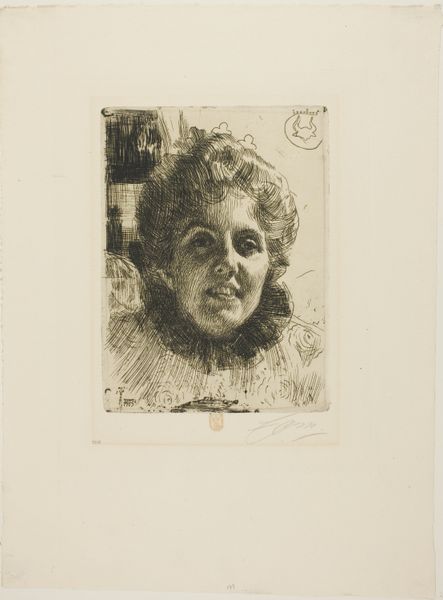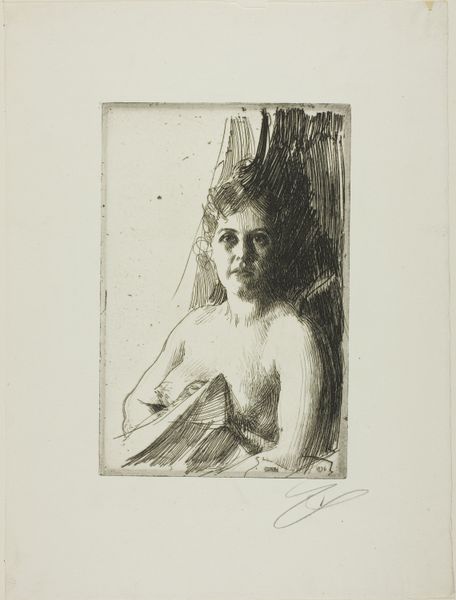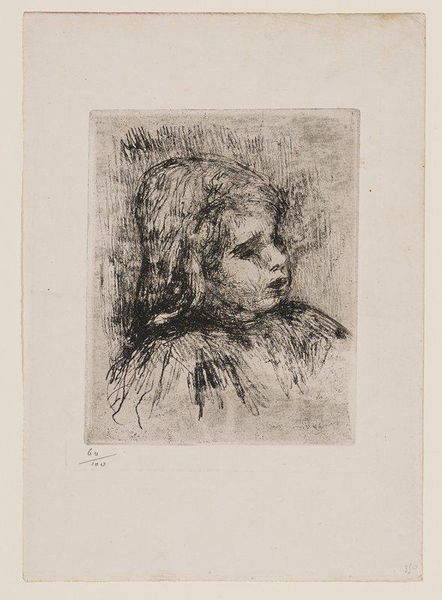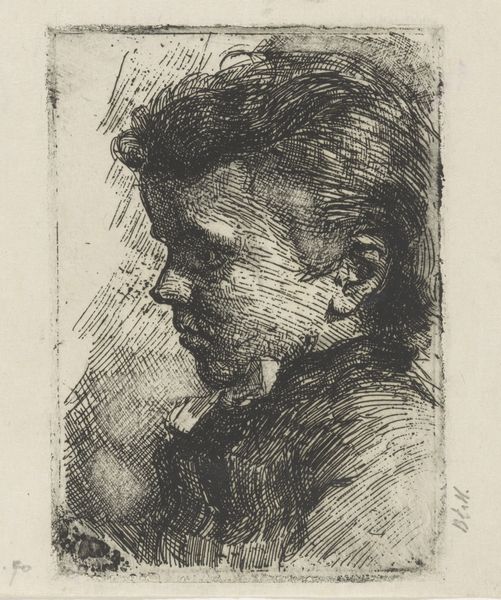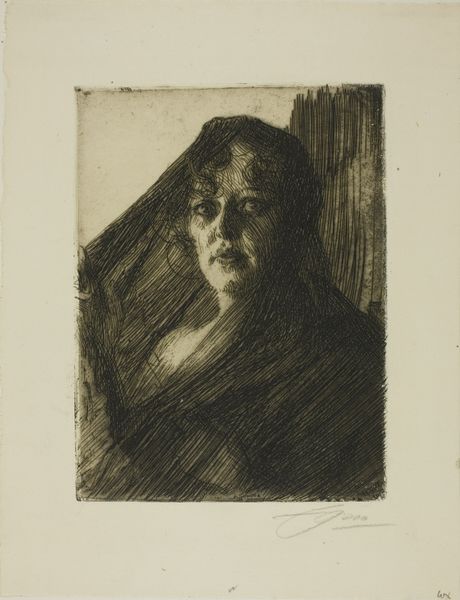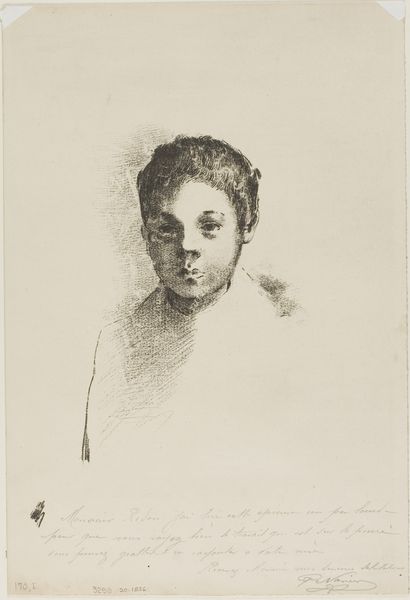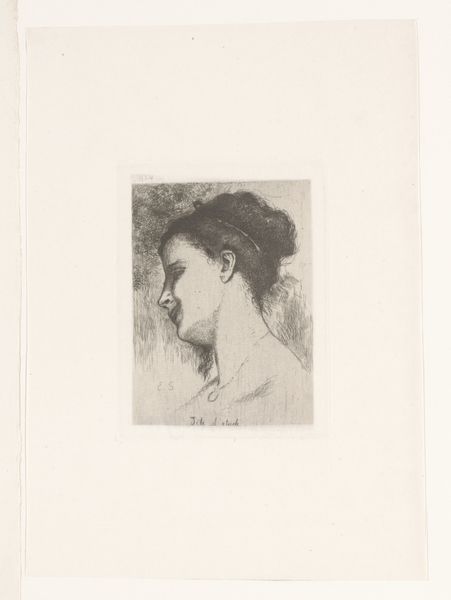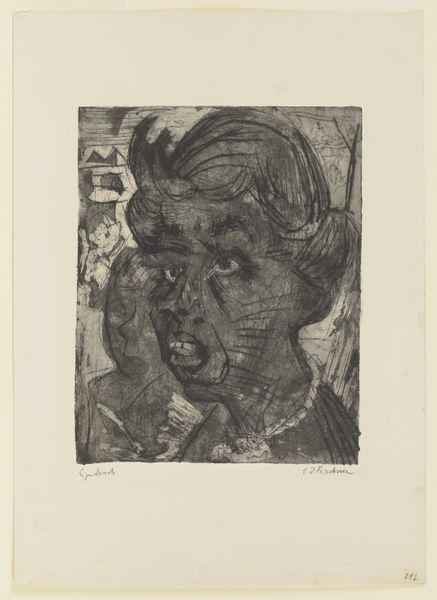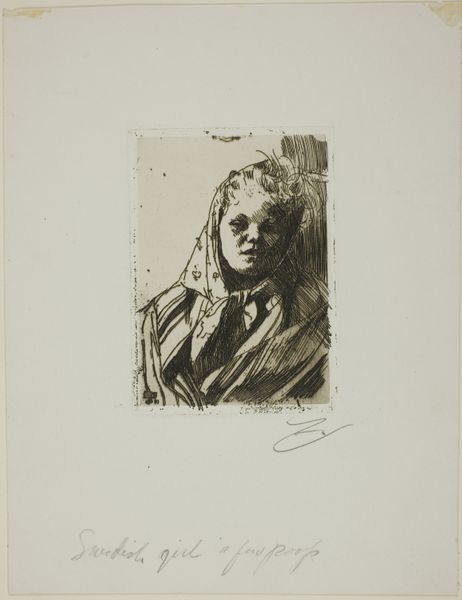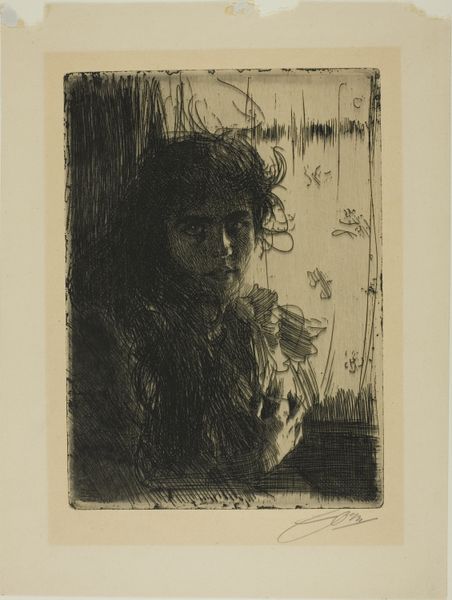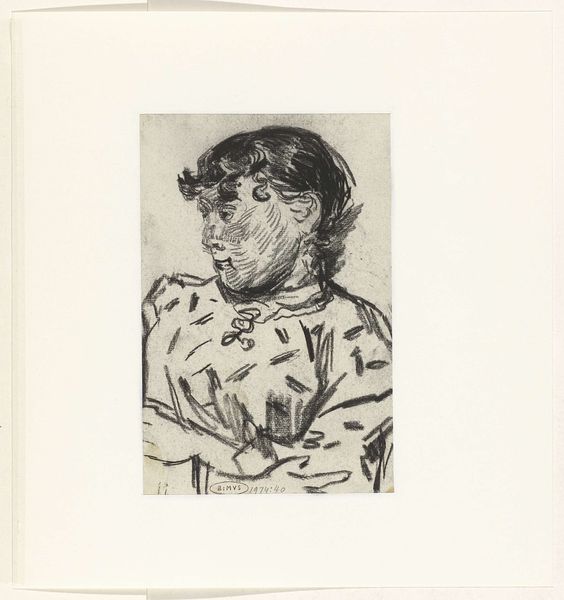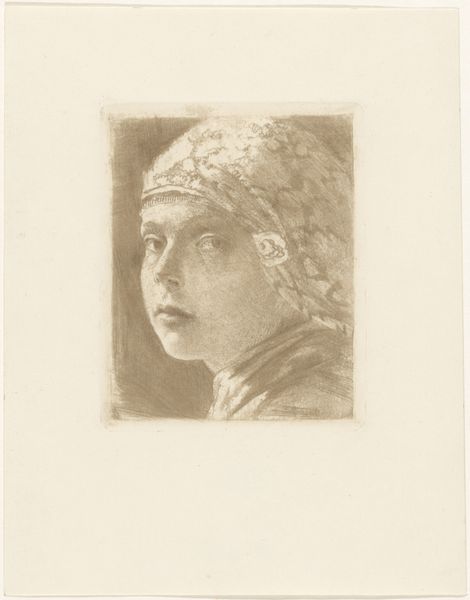
Aurore (Mrs. Aurore Klintberg, née Oxenstierna, Head) 1909
0:00
0:00
drawing, print, etching, paper
#
portrait
#
drawing
#
art-nouveau
# print
#
etching
#
paper
#
realism
Dimensions: 199 × 148 mm (image/plate); 327 × 255 mm (sheet)
Copyright: Public Domain
Editor: Here we have Anders Zorn’s “Aurore (Mrs. Aurore Klintberg, née Oxenstierna, Head),” an etching from 1909. I’m immediately struck by the delicate yet precise use of line. What can you tell me about this portrait, thinking about the artist’s approach? Curator: Zorn was celebrated for his ability to capture light and texture using etching techniques. It's important to consider that etching, as a printmaking medium, democratized image production to a degree. Here, look at the sheer volume of fine lines and the almost scribbled effect in the darker areas, building volume with simple labor. Can you see how that approach challenges traditional painting norms and its association with aristocratic patronage? Editor: Yes, the hatching creates a sort of restless energy, different from a smoother painting. But how does this tie into the social context of the subject? Curator: Notice that he depicted Mrs. Klintberg using a medium rooted in the process of repetitive mark-making and transfer. While portraits have often served as status symbols, here the means of production -- the labor involved, the accessible nature of printmaking -- bring an interesting twist to our perception of societal elite. The materiality subtly reframes her representation. Editor: So you're suggesting that the etching process itself brings a critical element, disrupting class distinctions through its own means of production. Curator: Precisely. Consider that Zorn often depicted scenes of everyday life and working-class people as well; here, it isn’t just about *who* is represented, but *how* she’s rendered via this accessible print medium. How might the consumption of art change if it's easier to circulate in society? Editor: I see your point. Thinking about this portrait in terms of its materials and its social implications gives me a completely new way of appreciating it. Thanks! Curator: And recognizing the materials helps us reassess its meaning within the broader context of art production and society.
Comments
No comments
Be the first to comment and join the conversation on the ultimate creative platform.
